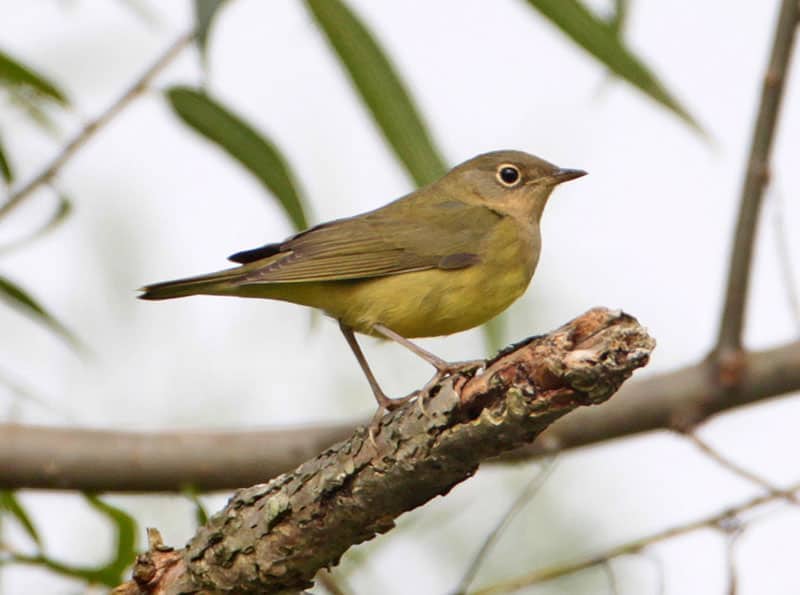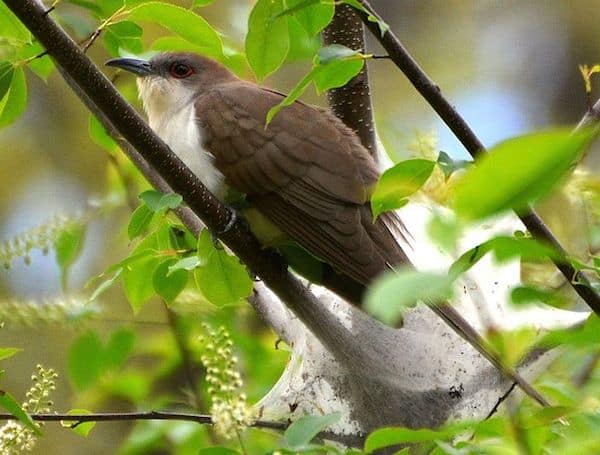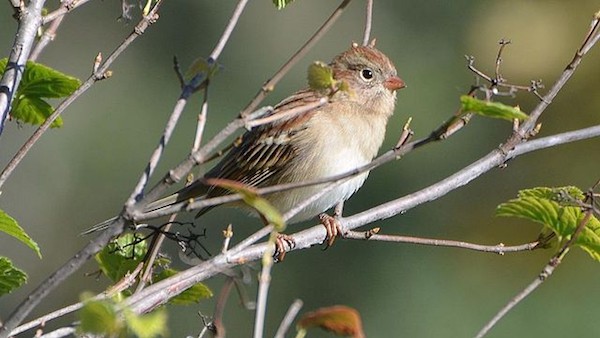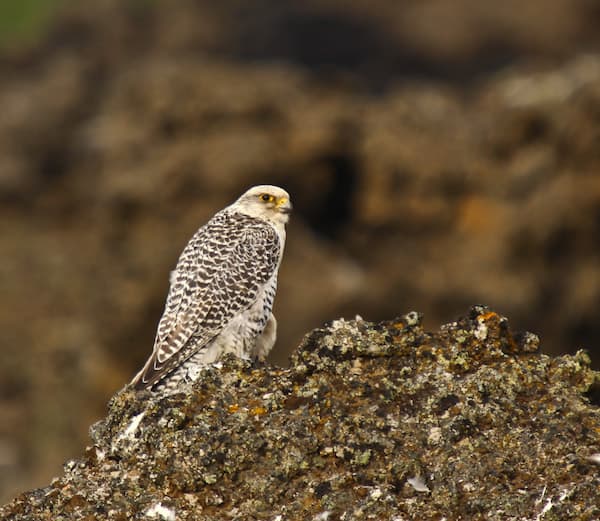Look For
The Connecticut warbler is a small songbird in general, but large compared to other warblers. The breeding male has a gray head and throat and muted olive-green back and wings. It also has a yellow belly and vent, with a distinctive white ring around each eye. The female Connecticut warbler is a more monochromatic version of the male with a browner head and paler throat.
Listen For
The Connecticut warbler’s song is a loud, ringing chant of chippy-chipper-chippy-chipper-chippy-chipper with emphasis put on the middle notes. The call is a soft, light pitch sound.
Find It
The elusive Connecticut warbler spends its breeding season in the southern and central parts of Canada and the parts of the United States bordering the Great Lakes. Despite its name, it does not breed in Connecticut and only rarely migrates through that area. The Connecticut warbler prefers to live in tamarack and black spruce bogs and open poplar or aspen woodlands.
The Connecticut warbler often remains hidden from sight by spending its time walking slowly and carefully amongst low, dense thickets. In the winter it migrates down across the Midwest of the United States to South America and areas around the Amazon River. There it inhabits a variety of woodlands and thickets.
Feeding Behavior
The Connecticut warbler feeds primarily on insects, though the details of its diet have not been well documented or studied. It has been observed eating caterpillars, spiders, and snails with the occasional seeds and berries. They forage by walking along the ground, finding insects by flipping over dead leaves. It also forages among tree branches by gleaning off the bark.
Nesting Behavior
The Connecticut warbler makes its nest on, or close to, the ground, hidden away in thick undergrowth or among thickets. The nest is constructed into an open cup shape using a combination of leaves, grass, bark, weeds, and other plant fibers. The female lays 4 to 5 off-white eggs with dark or purplish spots. The incubation period and roles of the parents aren’t well studied or known. It is believed that both parents take care of the young before they leave the nest after an unknown amount of days.




